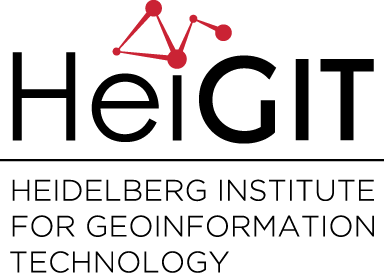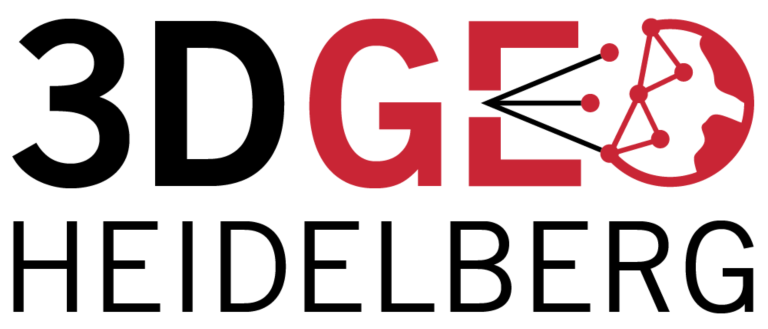Category: Publications
-
Comparison of Three Algorithms for the Evaluation of TanDEM-X Data for Gully Detection in Krumhuk Farm (Namibia)
Namibia is a dry and low populated country highly dependent on agriculture, with many areas experiencing land degradation accelerated by climate change. One of the most obvious and damaging manifestations of these degradation processes are gullies, which lead to great economic losses while accelerating desertification. The development of standardized methods to detect and monitor the…
-
The Triangle of Shared Data Sources
Todays data production, maintenance, and use have changed in the last years. While these tasks were reserved to professionals until a few years ago, the situation has changed. This is no different in the geographical domain. Volunteers gather general information in Wikipedia and geographical information in OpenStreetMap. Twitter users provide not only text snippets but…
-
Paper on High-Frequency 3D Geomorphic Observation using Hourly LiDAR Time Series
Can you imagine how much sand is being moved on the beach in the course of a week? Did you ever observe truckloads of sand being transported on the beach in the absence of storms and bulldozers? It is hardly possible to estimate to the naked eye, but can be quantified with permanent terrestrial laser…
-
Paper on Analysis of Feature Relevance in Deep Learning for 3D Point Cloud Classification
A paper investigating the relevance of (pre-calculated) features for 3D point cloud classification using deep learning was just published in the ISPRS Annals of Photogrammetry and Remote Sensing. The study presents a non-end-to-end deep learning classifier for 3D point clouds using multiple sets of input features and compares it with an implementation of the state-of-the-art…
-
ISCRAM 2019 in Valencia- Towards closer exchange in crisis management between practitioners, stakeholders and researchers
The 16th ISCRAM conference took place in the city of Valencia (Spain). It succeeded again to gather an international audience of researchers that shared their work all around crisis management. As ISCRAM is mainly interested in the support and intersection of practical application in crisis management and research, the focus was however again on another…
-
Assessment of health risk due to heat and fine particle matter in Germany
The risk of exposure to heat and fine particel matter on human health has gained significant media coverage recently. The so called dieselgate and the ban of driving for older diesel vehicles in several German cities have renewed attention to the health risk of fine particle matter – for which traffic is a major emission…
-
Usage of HELIOS for various applications
The Heidelberg LiDAR Operations Simulator (HELIOS) is an open source laser scanning simulation framework for interactive simulation and visualization of terrestrial, mobile and airborne laser scanning surveys. It can be flexibly used for teaching and training of laser scanning, development of new scanner hardware and scanning methods, or generation of artificial scan data sets to…
-
OSHDB: a framework for spatio-temporal analysis of OpenStreetMap history data
Earlier we published several blogposts introducing the ohsome platform and its parts (e.g. the ohsome API for example, which was often showcased here in the blog) and its backbone the OSHDB (very recently version 0.5 was published). A recent open access journal article gives even more background to the system, as shown below: Raifer, M,…
-
OpenStreetMap History Database – version 0.5
The OpenStreetMap History Database (OSHDB) is what powers most of the functionality of HeiGIT’s ohsome platform. The ohsome API for example, which was often showcased here in the blog, is built on top of the OSHDB. Just recently, an open access software article about the OSHDB was published. Check it out to find out more…
-
Multi-Parameter Relief Map from High-Resolution DEMs: A Case Study of Mudstone Badland
Topographic parameters of high-resolution digital elevation models (DEMs) with meter to sub-meter spatial resolution, such as slope, curvature, openness, and wetness index, show the spatial properties and surface characterizations of terrains. The multi-parameter relief map, including two-parameter (2P) or three-parameter (3P) information, can visualize the topographic slope and terrain concavities and convexities in the hue,…
-
Multisource and Multitemporal Data Fusion in Remote Sensing: A Comprehensive Review of the State of the Art
The recent, sharp increase in the availability of data captured by different sensors, combined with their considerable heterogeneity, poses a serious challenge for the effective and efficient processing of remotely sensed data. Such an increase in remote sensing and ancillary data sets, however, opens up the possibility of utilizing multimodal data sets in a joint…


